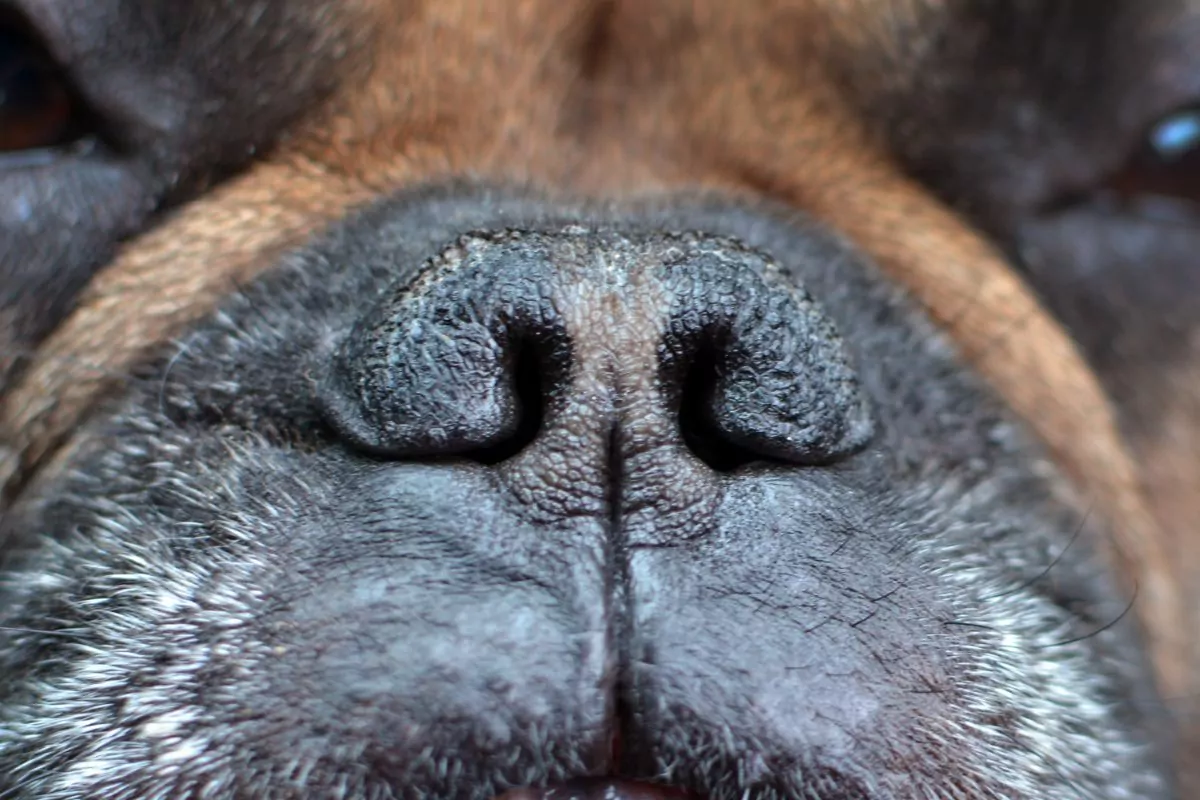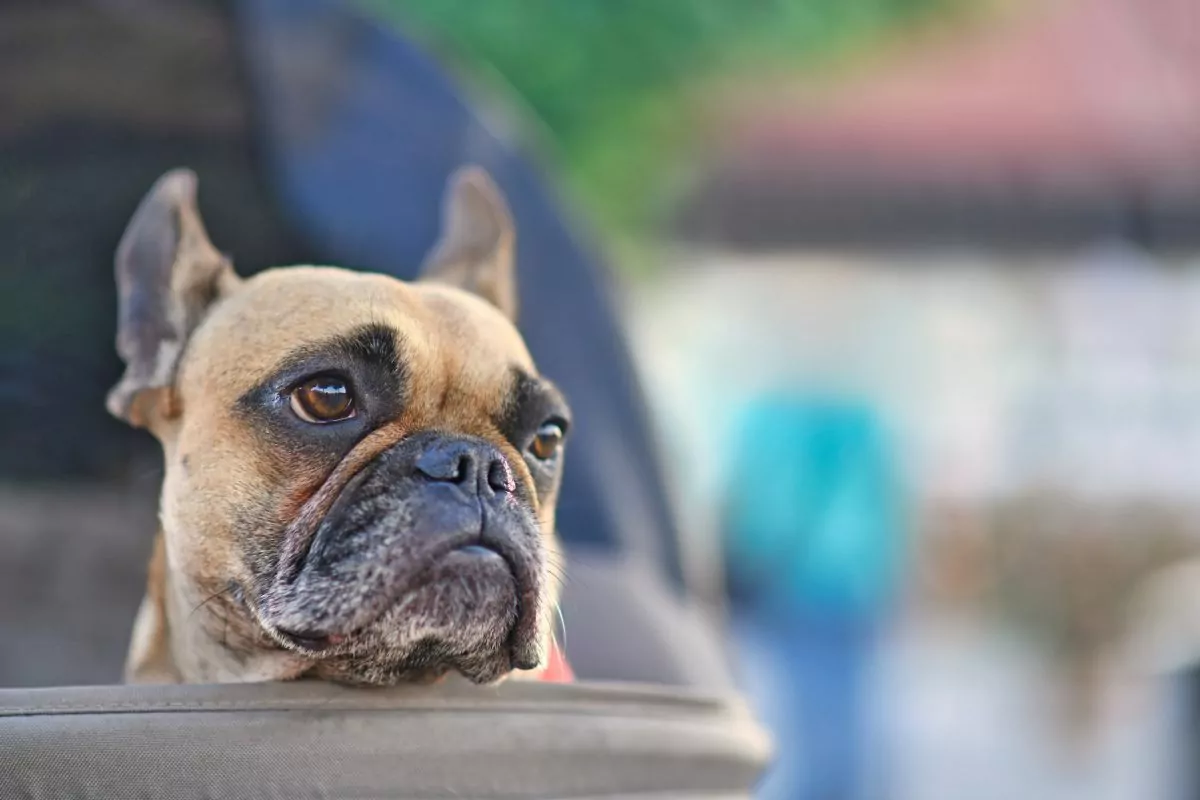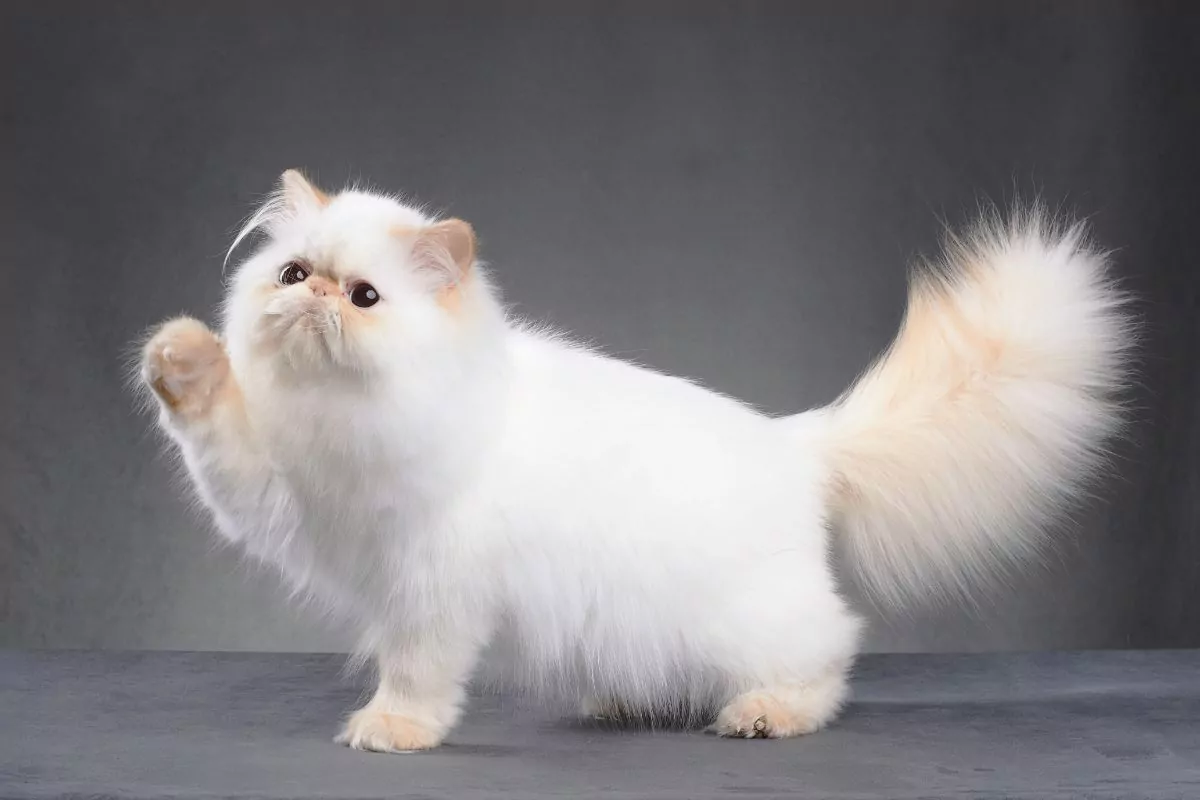What is BOAS?
You may have heard the term before, either in the news or on social media. But do you know what brachycephalic obstructive airway syndrome – more commonly known as BOAS – actually is? BOAS is a relatively new syndrome associated with the flattening of the cranial structures in certain dog breeds leading to obstruction of the airways.
Unfortunately, no matter how cute and sweet short-faced dogs are, brachycephalic syndrome leaves many dogs in severe discomfort as they cannot breathe correctly due to deformities and other related health issues.
Breathing troubles and health issues lead to many within the veterinary community arguing whether it is ethical to continue breeding these dogs!
But what is BOAS, and what does it mean for brachycephalic dogs, keep reading to learn more!

What is a Brachycephalic Dog Breed?
Brachycephalic is a medical term that translates into English like this: With “Brachy” meaning “short” and “Cephalic” meaning “head” or “related to the head,” brachycephalic thereby equals “short head.” Therefore, brachycephalic syndrome is a range of conditions associated with being a dog with a short or flat face.
Some of these brachycephalic breeds include, but aren’t limited to:
- Pugs
- French Bulldogs
- English Bulldogs
- Pekingese
- Shih-Tzu
Although brachycephalic and BOAS are most commonly associated with small dog breeds, larger dogs can also be brachycephalic, for example, Boxers!
But how did these breeds become so short-faced dogs? When we look back at the ancestors of the brachycephalic dogs, they were not as short- or flat-faced as the ones we see today.
Originally all dog breeds had a purpose. Like the pugs and Shih-Tzus, some were companion dogs from the start. But other breeds, like the bulldogs, had utterly other purposes.
A bulldog is made initially to hunt bulls and for bull-baiting. Their strong bites meant they could launch themselves at the bull, bite it and hang on. Having a slightly shorter face than other breeds meant they could hang on even better.
However, despite having an ancestor with a slightly shorter nose, that is not the reason their noses are so short today. The most crucial factor is popularity. In short, due to popular demand from dog owners wanting cute flat-faced dogs and irresponsible breeding, these dogs are struggling and suffering from brachycephalic airway obstructive syndrome.
Don’t get me wrong: They are cute! Brachycephalic dogs, especially pugs and French Bulldogs, are adorable. On top of that, they almost always have lovely temperaments and an energy level that fits most lifestyles. But do not be mistaken: The vast majority (maybe even all of them) are not physiologically healthy and cannot breathe properly.
Try breathing through a straw, and you will know how it feels to be them. It is not uncommon for veterinarians to report bulldogs waking up from anesthesia and the dogs preferring to breathe with a breathing tube still down their throat. Because having a plastic tube in their throat is still better than how they usually feel.
Unfortunately, the breathing issues aren’t even half of the issues regarding brachycephalic obstructive airways syndrome. There is much more to it.
Canine Health Problems Associated With BOAS
Throughout many generations, breeders chose the dogs with the shortest noses, directing the genetic pool towards a compacted skeleton – leading to several malformations throughout their bodies.
Imagine looking at the side of the face of a Labrador. Now imagine if you start squeezing it together. The skull will become smaller, but there will be the same amount of soft tissue on top of it. Brachycephalic dogs have too much soft tissue compared to the size of their skeleton.
The most obvious sign of this excessive soft tissue is the skin folds on their face – sometimes down their neck and bodies. Now imagine the same folds within the body. The folds are what obstruct their airways. As we’ve said earlier, the obstructed airways are only part of the problem with this syndrome, but let’s start there.
Upper Airways
Stenotic Nares
When the skull becomes compressed, the nasal airways become very small and short as soft tissue fills up the space. This is visible outside, where most brachycephalic dogs have tiny nostril spaces due to the malformation. That becomes a problem when you consider that dogs breathe mainly through their nose.
Enlarged Tongue
It is not that the tongue is too large per se; it is just too large for their smaller head. It leads the tongue to obstruct the air further as it passes through the mouth.
Elongated Soft Palate
Air gets to the soft palate once it has made it through the obstructed nasal airways or past the tongue. Most brachycephalic dogs then have what is called an elongated soft palate. Meaning it is too long and thick for their flat face, effectively causing it to obstruct the dog’s throat partially.
This obstruction, along with the stenotic nares, causes the grunting and snoring often coming from these dogs.
Larynx Paralysis
The larynx is a cartilage structure at the back of the throat. It partly allows air to go into the lungs and keep food out. In brachycephalic dogs, this can collapse and/or become paralyzed, leading to continuously blocking the airways.
Lower Airways
Narrow Trachea
The trachea is the “tube” that goes from your throat to the lungs. It is made of soft tissue and kept open by cartilage rings. In brachycephalic dogs, this tube can become too narrow, and it may even collapse in some dogs.
Lungs
Once the air has made it through the obstacles in the upper airways, it finally gets to the lungs. However, most brachycephalic dogs attempt to compensate for the obstructions in the airways by dragging the air into their lungs much harder, causing a negative pressure in their throat, neck, and chest. This can lead to secondary lung diseases in the dog.
Other Issues
Digestive Issues
Due to the increased negative pressure within the chest area, many brachycephalic dogs also suffer from digestive issues frequently. Digestive issues that include vomiting and regurgitation. In turn, this can lead to other issues like esophageal burns. Read our article and find out Digestive Disorders: Pancreatitis in Dogs.
Skin Infections
The best place for any bacteria is somewhere dark, moist, and warm. The folds on the face and body are all of these things. On top of that, it is not a place the dog can keep clean itself. Therefore, many of these dogs tend to suffer from infections within the skinfolds. Infections that are incredibly itchy and even painful sometimes.
Overheating
Another frequent issue with these breeds is overheating. Dogs don’t sweat like you, and I do; they release heat through panting. However, if the air can’t easily come down, the heat can’t easily come out, meaning these dogs are at risk of collapsing due to overheating. It doesn’t even have to be very warm; it can also occur due to exercise or excitement.
Eye Deformities and Injuries
When the skull becomes smaller and shorter, the eyes do not become smaller with it. Therefore, many of these dogs have outstanding eyes, leading to an increased risk of injury and diseases.
Sadly there are many more issues these dogs tend to suffer from frequently. Including, but not limited to:
- Allergies
- Ear infections
- Dental diseases
- Slipped discs
As well as the inability to give birth naturally due to the broad shoulders and rounded head of the puppies being unable to pass through the mother’s pelvic canal.
Signs of Brachycephalic Obstructive Airway Syndrome
Although some of the above symptoms are very obvious, some may not be, so what are the signs of BOAS?
Although I hate to be the bearer of bad news, it has to be said: If you have a brachycephalic dog breed, it suffers from BOAS. To some degree. Some dogs may be affected minimally and may not show a lot of distress, but it does not mean that they aren’t constantly using excessive efforts to keep their throat open and the air flowing.
More moderately affected dogs will, of course, have more evident symptoms.
Nonetheless, what is considered “normal” for the breed is still physiologically abnormal. No matter how cute. A healthy, young dog should not be snoring when sleeping, nor should you be able to hear it breathe when it is just walking around. Snorting noises is another commonplace symptom.
Other symptoms include regurgitation or vomiting when eating, and some dogs may even have severe conditions that lead to collapse and the inability to breathe entirely.

Diagnosing BOAS in Dogs
Diagnosing brachycephalic obstructive airway syndrome in dogs is mainly based on the combination of three things:
- Breed, either purebred or as a mix of breeds known to be brachycephalic.
- History of symptoms at home, e.g., exercise intolerance, snoring, and grunting.
- Physical examination in the clinic.
In most cases, this is enough to diagnose BOAS, but further diagnostics may be necessary to assess and possibly diagnose the different components of BOAS. Further diagnostics can include:
- Endoscopic examination of the airways in general anesthesia. To evaluate the soft palate, larynx, and trachea.
- CT scans of the head to assess the conformation of the skull.
- CT scans or x-rays to assess possible secondary conditions within the chest, e.g., hiatal hernia or pneumonia.
- X-ray to evaluate the spine for slipped discs.
- Skin samples to diagnose possible infections.
BOAS is, as the name suggests, primarily the obstructed airways. But as it is a syndrome, many other symptoms and conditions may be present, and a wide range of diagnostics is often necessary to ensure the veterinarian can shed light on all the issues associated with BOAS.
Treatment Options for Brachycephalic Obstructive Airway Syndrome
Fortunately, there are some options to help alleviate some of the symptoms associated with brachycephalic obstructive airway syndrome. The primary initial therapy is to help ease the obstruction of the airways, which is possible in several ways, including a BOAS surgery – often a combination of the two surgeries mentioned below.
Stenotic Nares Surgery
Correcting the stenotic nares can alleviate some obstruction as a significant amount of airway resistance comes from the nasal passages. A portion of the nostril gets removed to surgically widen the nares and create a bigger hole for the air to pass through.
Stenotic nares surgery complications are few and rare, but significant bleeding and some discomfort after the surgery can occur.
Soft Palate Resection
Another surgery often done on BOAS dogs is to surgically shorten the dog’s soft palate and attempt to make it slimmer. A soft palate surgery. Effectively the surgeon will attempt to remove the excess part of the soft palate blocking the airways to allow the dog to drag air more easily into the lungs.
When discussing treatment options, it is also worth mentioning that you shouldn’t worry about taking your dog to the vet. It is a worry for some owners, especially as the media’s rhetoric about the BOAS dogs can become uncompromising. But do not worry; the veterinary professionals are there to help your best friend first and foremost!
BOAS Post-Surgery Prognosis
So, what after a BOAS surgery can all the problems be fixed? First and most importantly, the prognosis for recovery after a BOAS surgery is good. Most dogs will recover fully once they are out of the perioperative period right after surgery when they wake from anesthesia.
As we’re already on the good news: Almost all dogs who undergo a BOAS surgery are improved by it. Meaning they, post-surgery, will require significantly less effort to breathe, thereby increasing their quality of life and lessening the risks of secondary complications like overheating and digestive issues.
It is also important to discuss whether brachycephalic dogs are improved enough by surgery.
Most dogs benefit greatly from undergoing surgical corrections to their airways, which is an excellent reason to do it. Nevertheless, one can argue that the majority of these dogs still suffer from respiratory issues afterward and other issues related, including slipped discs, skin infections, and dental issues that aren’t fixable at the same time.
Tips for Dealing With A Dog Exposed to BOAS
If you are determined to get a brachycephalic dog breed, the best tip we can give you is this:
- Support ethical breeding.
- Make sure you do your leg work before buying a puppy and make sure you buy from a breeder that does their health checks.
- Remember, a dog that has needed corrective surgery for BOAS should never breed.
But what if you have already bought a brachycephalic dog? Congratulations, you are already on the right track: Looking up information – doing your best to help your dog!
First, be honest with yourself. Does your dog have symptoms of obstructed airways?
- Snoring
- Grunting
- Regurgitation and/or vomiting
If one of these symptoms is present and you know your dog is either a purebred or a mix of dog breeds with flat faces, your dog will benefit from seeing a veterinarian.
Of course, the best-case scenario is that your veterinarian tells you that your dog has minimal symptoms and will not need corrective surgery, which may very well happen!
Another scenario is that your veterinarian tells you your dog may need BOAS surgery. Surgery and general anesthesia may be scary for many owners, which is very understandable. Luckily, surgery and anesthesia are generally very safe, and surgery could significantly improve your dog’s quality of life!
In the end, owners and their dogs are lucky that treatment options are available for brachycephalic dogs today. That said, one cannot deny that the best “treatment” in the future may be not to support the breeding of dogs with too flat faces.
Some ethics and veterinarians even argue that you shouldn’t breed these breeds at all – pedigree or not – and some countries are looking into banning them. Others argue that the only way to save future generations of dogs is to “open the books” and mix the dogs with other more long-nosed breeds.
Whether that is the solution or not is difficult to determine and will probably depend a lot on what “side” of the argument you are on. For now, and for owners, the best thing you can do for your brachycephalic dog is to have it checked over by a veterinarian to ensure that your best friend is breathing as easily as possible!
Why are Only Certain Breeds Predisposed to BOAS?
The term brachycephalic only refers to the short head that is a desired trait in some breeds, but over time it has become synonymous with obstructive airway syndrome as it is the short head that is at the root of the problem.
When pedigree breeding first originated, it was to preserve some characteristics seen in some breeds, such as specific coat color and other abilities, like being a great shepherd or hunting dog.
Only some breeds are affected by BOAS due to the breeding of these specific characteristics in these breeds: A round and flat head.
Genetically humans will find animals – and objects – that resemble babies cute. Animals with a round face, flat nose, and big eyes. That’s how human babies come out. It is in our DNA to find that adorable and want to protect it.
Most professionals will argue that it is the adorableness of the flat-nosed breeds that have led to the excessive breeding of dogs with the shortest nose – because they appeal to us, humans. Over time this has led to the inherited defects – brachycephalic heads – leading to BOAS.
Other dog breeds may suffer from obstructed airways. Still, in long-nosed breeds, it will often only be one “obstruction,” not a syndrome of many different obstructions – and a range of other conditions that seem to appear coordinated with BOAS.
Does BOAS Affect Cats Too?
The dogs aren’t the only ones to suffer from the human tendency to breed “cuteness” into our pets. Some cat breeds are also brachycephalic and thereby tend to suffer from brachycephalic obstructive airways syndrome. The most well-recognized brachycephalic cat breeds are:
- Himalayan cats
- Burmese cats
- Persian cats
These breeds, however, do not share the same popularity as brachycephalic dog breeds, which is why they are rarely part of the public debate.

Key Highlights
Brachycephalic dogs are a hot topic these days all over the world. In some European countries, the breeding of dogs with obstructed airways even goes against animal welfare laws – theoretically. But banning one of the most popular breeds in the world isn’t exactly easy, nor is dealing with the problem as straightforward as that.
Whether it is a French Bulldog, a Pug, or a Persian Cat, most of these animals are wonderful companions and much loved by their families – understandably so. If you own or want to own a brachycephalic dog, ensure you buy from a responsible breeder and always keep an eye on your best friend, seeking veterinary care when necessary.
That is by far the best way to ensure you will have many happy and healthy years with your new best friend.
